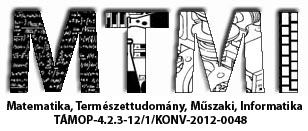Vitamin D receptor gene polymorphisms in patients with Sjögren's syndrome
Abstract data
Sjögren’s syndrome is a common systemic autoimmune disease that primary affects the exocrine glands and leads to xerophthalmy and xerostomy. Other symptoms, called extraglandular manifestations (EGMs), may also be found in a group of patients. Since vitamin D has several immunomodulatory effects through vitamine D receptor (VDR), a nuclear hormone receptor have four known polymorphisms (BsmI, TaqI, ApaI and FokI). Several studies have reported that genetic variations of VDR might be a risk factor for the development of autoimmune diseases.
The frequency of BsmI and FokI polymorphism genotypes were investigated in patients with Sjögren’s syndrome, and to determine whether these polymorphisms are associated with the disease.
In our study, 70 Sjögren’s syndrome patients (26 with glandular symptoms (GS) and 44 with EGMs) and 118 healthy controls were tested for VDR gene BsmI and FokI polymorphism genotypes. Genomic DNA was isolated from peripheral blood sample. BsmI polymorphism was analysed by real-time PCR using TaqMan probe, and individuals were scored as BB homozygotes, Bb heterozygotes and bb homozygotes according to the amplification pattern. The FokI polymorphism was identified by PCR-RFLP method, and samples were denoted as FF homozygotes, Ff heterozygotes and ff homozygotes according to the restriction pattern.
The frequencies of VDR BsmI genotypes were 38.57% bb, 47.14% Bb, and 14.29% BB in all Sjögren’s syndrome patients. The genotype frequencies showed a similar distribution in healthy controls, in GS and in EGMs patients (p>0.1). The distribution of the VDR FokI genotypes were 34.78% FF, 53.62% Ff, and 11.6% ff in cases. No evidence of significance was observed in healthy controls and in EGMs patients (p>0.1). However in the GS group, there was a noticeable difference in the distribution of the VDR FokI genotypes compared to control group although this difference (p=0.06) did not reach the statistical significance.
These findings suggest that BsmI VDR polymorphism was not associated with Sjögren’s syndrome in our population. The FokI VDR polymorphism might be involved in Sjögren’s syndrome, but a study with more cases could be beneficial to prove.
Támogatók: Támogatók: Az NTP-TDK-14-0007 számú, A Debreceni Egyetem ÁOK TDK tevékenység népszerűsítése helyi konferencia keretében, az NTP-TDK-14-0006 számú, A Debreceni Egyetem Népegészségügyi Karán folyó Tudományos Diákköri kutatások támogatása, NTP-HHTDK-15-0011-es A Debreceni Egyetem ÁOK TDK tevékenység népszerűsítése 2016. évi helyi konferencia keretében, valamint a NTP-HHTDK-15-0057-es számú, A Debreceni Egyetem Népegészségügyi Karán folyó Tudományos Diákköri kutatások támogatása című pályázatokhoz kapcsolódóan az Emberi Erőforrás Támogatáskezelő, az Emberi Erőforrások Minisztériuma, az Oktatáskutató és Fejlesztő Intézet és a Nemzeti Tehetség Program



